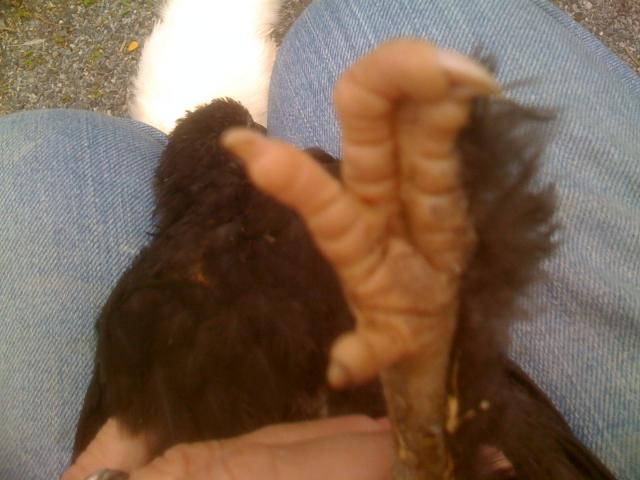I have a BCM pullet who is 7 weeks old.
She has a web between the long middle toe and the 'outer' toe, on each foot.
The web has pulled the tip of her middle toe over toward the outer one, causing a sideways curve of
the middle toe (pictures below).......
She has trouble walking/standing/balancing...............................and I believe it is mainly due to the
fact that the surface area of the spread of her toes is greatly limited. She essentially only has 2 toes, which are
a short distance from each other, to balance on..................vs 3 spread-out toes, like a normal foot.
Has anyone ever had success surgically removing the web to allow the toes to move more naturally?


She has a web between the long middle toe and the 'outer' toe, on each foot.
The web has pulled the tip of her middle toe over toward the outer one, causing a sideways curve of
the middle toe (pictures below).......
She has trouble walking/standing/balancing...............................and I believe it is mainly due to the
fact that the surface area of the spread of her toes is greatly limited. She essentially only has 2 toes, which are
a short distance from each other, to balance on..................vs 3 spread-out toes, like a normal foot.
Has anyone ever had success surgically removing the web to allow the toes to move more naturally?





